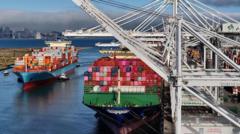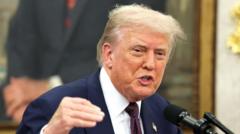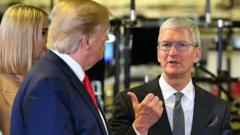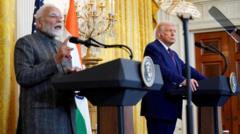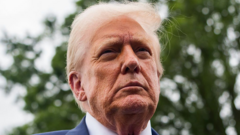The ongoing U.S.-China trade conflict has shifted focus from tariffs to a tense battle over global supply chains, particularly as both nations impose restrictions on essential technologies and materials, creating uncertainty for industries reliant on cross-border components.
The Evolving Landscape of U.S.-China Trade: Supply Chain Struggles

The Evolving Landscape of U.S.-China Trade: Supply Chain Struggles
As trade tensions between the U.S. and China escalate, the rivalry shifts from tariffs to strategic control of critical supply chains.
The ongoing trade conflict between the United States and China is evolving, with both nations now vying not only over tariffs but also control over vital global supply chains. Recent developments indicate a dramatic shift in tactics, as the U.S. suspends sales to China of key components and software necessary for jet engines and semiconductors. This move follows Beijing's decision to restrict exports of rare earth minerals, critical for a variety of manufacturing processes.
Last week, the tension intensified as both countries accused one another of acting in bad faith. This supply chain conflict, layered on top of existing tariffs, is causing significant alarm among companies that rely on an interconnected web of international suppliers for their products. Concerns are particularly high over potential vulnerabilities in other sectors, such as pharmaceuticals and shipping, as U.S. officials contemplate China's ability to exert further economic pressure.
The aviation industry has found itself at the center of this conflict, illustrative of both the stakes and challenges. While U.S. companies like General Electric provide essential jet engine technology and sophisticated navigation systems, the manufacturing of these engines is contingent upon rare minerals processed in China. These minerals are vital for specialized engine coatings and components designed to withstand extreme high temperatures.
In April, China imposed restrictions on the export of these critical rare earth elements shortly after the U.S. began imposing significant tariffs on Chinese goods. The dual impact of these strategic moves means that both nations are grappling with the ramifications of their actions as industries that depend on a seamless flow of parts and materials face rising operational challenges, highlighting just how intertwined and yet precarious the global supply chain has become.




